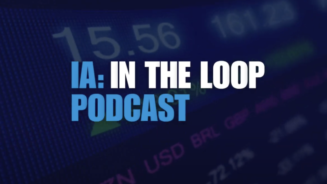For many Singaporeans, the extraordinary wealth of some of its growing number of citizens-by-choice was highlighted earlier this year, when a young father from India paid an eye-watering S$39m ($31.9m, £20.1m) for a bungalow on Singapore’s ritzy Sentosa Island.
Singaporeans may be the world’s third-richest citizens, as measured by per capita GDP. But even they, to judge by the local media reaction, were stunned to discover that the Sentosa house was intended for weekend use only. The rest of the week, the family would live elsewhere in the city, in another residence closer to his children’s school, the father-of-two explained.
‘One million sing dollars’
A few months later, another collective gasp went up when it was revealed that a modest, 1,615ft2, 17-year-old flat built by the Singaporean Government – a so-called Housing and Development Board (HDB) apartment – had sold for S$1m, the first time one of these no-frills Government flats had touched the million-sing-dollar mark.
The property “has an unblocked view of Queenstown stadium and is close to food centres, supermarkets and [the] Queenstown MRT station,” The Straits Times reported in September, adding that it had attracted “more than 50” other offers. The story sparked a debate in the Singapore press about how few young people, and those of modest income, might expect ever to own a home.
Welcome to one of the few places in the world that seems untouched by the pessimism and wariness weighing on markets just about everywhere else.
Or perhaps, some observers here say, Singapore is not so untouched by all that pessimism as it is actually benefiting from it, as people shift their investments, savings, regional headquarters and even theirlegal residence to this steamy, 275-square mile city-state.
First choice
To be sure, its economy has slowed substantially over the past year, with the latest Government forecasts predicting it will expand by as little as 1.5% this year, down from 4.9% last year. The outlook for 2013 was recently cut back to 1-3%. Yet by comparison with most other places, Singapore seems relatively unscathed.
In particular, it is seen as a beneficiary of the growing wealth of neighbouring Asian countries such as Malaysia, Indonesia and Thailand, as their high net worth individuals choose to keep their savings in Singaporean institutions. Even many wealthy Chinese are said to prefer Singapore to Hong Kong as a place to stash their cash.
Explains Nick Anderson, director of AAM Advisory, the expat-focused firm: “With its geopolitical stability, strong currency and proactive financial services regulator, Singapore is seen at the minute as a safe haven.”
Anderson points to the strength of the Singapore dollar as among the most obvious indicators of this safe haven status: “A pound sterling only buys S$1.95 today, compared with around S$3 five years ago.”
One of the prices of such global popularity is, apparently (and rather ironically), high prices – as various studies released over the past six months have revealed.
Almost everything that comes with a price tag in Singapore is costing more than it did last year at this time – and often, more than it does almost anywhere else as well.
Julius Baer’s second annual Asia Wealth Report in September, for example, noted that of Asia’s four main financial centres, “Singapore was home to the highest price hikes in US dollar terms [in the 12 months to April 2012], followed by Shanghai, Hong Kong and Mumbai”, which, in the case of these four major financial centres, merely added to prices that in certain categories were already world-leading.
Global ranking
The Julius Baer report is unusual in that it focuses on a shopping basket of luxury goods that wealthy individuals would be most likely to have in their virtual shopping carts, such as luxury cars, fine wine, jewellery, facelifts, cigars and even “classic Louboutin pumps” (see "Measures of success", below).
“People are talking about the cost of everything going up – housing, schooling, groceries, everything,” says David Bellingham, chief executive officer of Professional Investment Advisory Services (PIAS), one of the largest financial advisory firms in Asia. It is currently in the process of seeing Aviva Asia acquiring an 81% stake in the Australian holding company that owns it.
Cautious attitude
“At the same time, we’re seeing much greater caution on the part of people in the way that they approach their investments. They want to beat inflation, but without too much volatility, and as such we are actively managing portfolio construction.”
Another financial services expert in the funds industry, who has been in Asia for the past 30 years, added: “Now that the traditional expatriate package is disappearing, many expats are looking for much cheaper accommodation than they would have in the past, because it’s all coming out of their own pockets, whereas before, housing and even the school fees were often handled by their company.
“As a result, many expats are moving a bit further out, even up to Johor Bahru [province] in Malaysia, or else they’re renting HDB [Government] flats, which they are allowed to do now.”
FAIR in the air
For advisers and those providing them with investment products and insurance, the central preoccupation as 2012 comes to a close is not inflation but the imminent revelation of changes to the way financial products may be sold to Singaporeans, upon completion of the Financial Advisory Industry Review (FAIR).
The review was unveiled unexpectedly in March by the head of the Monetary Authority of Singapore (MAS). Ever since that day, advisory firms in particular have been trying to plan for the growth and evolution of their businesses without having some key facts before them – such as, for example, whether they will be able to continue to receive commission payments as a form of remuneration.
Such commission payments were banned in the UK under its Retail Distribution Review (RDR), which takes effect on 1 Jan, 2013. But although the FAIR review is seen as having been modelled on RDR, among other similar reviews, Lee Chuan Teck, chairman of the FAIR review panel and a senior figure at MAS, surprised the market in May by issuing a public statement to the effect that it was “premature and inaccurate to suggest the panel will recommend a fee-based model”.
The statement was seen as significant by industry practitioners, who took it as a clear signal, as PIAS’s Bellingham says, that the MAS was concerned about ensuring transparency and value for the money clients paid, rather than focusing on the precise mode of the payment.
“We don’t know what the review panel will ultimately come up with, but we think we have a general idea of the principles,” Bellingham adds.
‘FAIR-ready, not FAIR-distracted’
At the Henley Group, chairman Antony Michell says FAIR was seen at once as a “catalyst” for going ahead with some changes to the company’s business model that had already been planned.
Within days of the announcement of the FAIR review, he said a Henley Group management team went to work on a formal FAIR response strategy “to encompass all aspects of the business”.
“Our strong view is that the future is not commissions and it is not fees, it is very much client choice,” Michell says.
Like many of his colleagues, Bellingham does not believe the FAIR panel is likely to unveil its findings before the end of 2012, though he says it could come around the time of the Chinese New Year celebrations in February.
In the meantime, he says, “our philosophy here at PIAS is to keep making sure we are FAIR-ready – but not FAIR-distracted”.
Measures of success:
How Singapore stacks up
Measuring and comparing the world’s global financial centres is a favourite parlour game of those who live and work – and whose companies compete – in such places.
Although little more than a regional seaport and Malaysian state until the 1960s (it declared independence in 1965), with a stock exchange that dates back only to 1999, Singapore has managed to leap to the top of an astonishing number of league tables in the past decade, leaving many longer-established GFCs in its air-conditioned, room-fragranced wake.
It is, for example, fourth – behind London, New York and Hong Kong – in the Global Financial Centres Index, compiled twice annually by the London-based Z/Yen Group. The index has been monitoring the competitiveness of more than 70 financial centres since 2007, by means of a combination of statistical data and interviews of attitudes among those who make use of such centres.
In September – the same month that the GIFC report came out – Singapore topped a Julius Baer study of Asia’s four main financial centres in terms of how much prices rose during the 12 months to April 2012 on a carefully-chosen shopping basket of luxury goods.
“Singapore was home to the highest price hikes in US dollar terms, followed by Shanghai, Hong Kong and Mumbai,” a summary of the Julius Baer findings said. The weighted average inflation across all four cities over the year, for the goods selected, came out at 8.8%, the data showed.
Singapore wasn’t the most expensive in all categories, however: a 4,000-sq-ft “top location” residential property in Hong Kong would have cost US$40.4m, compared with “just” US$13m in Singapore, and US$15.9m in Shanghai.
On Mercer’s more conventional annual Cost of Living ranking, meanwhile, Singapore rose in June to tie for sixth place with Zurich, from eighth place last year. This survey compares the relative priceyness of some 214 world cities by comparing prices on a basic range of some 200 regularly purchased items, such as staple foodstuffs (as opposed to Lafite Rothschild 2000) and general, rather than luxury, transport.
One chart on which Singapore is uncharacteristically unflamboyant is the so-called Big Mac Index, compiled annually by the Economist magazine. There are different ways of comparing the price of McDonald’s Corp’s high-calorie burger, but no amount of number-crunching reveals anything terribly startling about the item’s cost in Singapore relative to its price elsewhere.
In US dollar terms, it is cheaper in Singapore, at $3.75, than in 17 other countries, out of a total of 44 that were examined by the Economist at the beginning of 2012; it is even cheaper in Singapore than in the US, where it costs $4.20.
To spend the most on a Big Mac, you have to go to Switzerland, where it will set you back the equivalent of $6.81.




